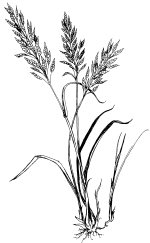
Pre-1854: Hunting and Small-Scale Agriculture
The Dakota
In the early to mid-1800s, the Dakota lived throughout southern Minnesota. The Wahpekuta band was the primary group in the area where the WMA is now located. Land use included hunting, gathering, and some agriculture.
Prairie maintenance depended on grazing and fire.

Painting by George Caitlin Smithsonian American Art Museum

Painting by George Caitlin Smithsonian American Art Museum
Grazing
Plants were adapted to withstand regular grazing by bison, deer, and elk. The use of grazing preserves native species on prairies, and controls the growth of brush on the grasslands. Herds typically grazed for a period of time and then moved on, giving the grasses and other plants time to rejuvenate.
Plant Biodiversity
Bison initially roamed the Midwest and the Great Plains region, and were the main grazers. They would migrate from grassland to grassland, selectively grazing on the non-native plants and only resorting to native species when there was nothing left to eat. This was instrumental in regulating the regional biodiversity, preventing erosion and ensuring the survival of native species. This practice of selective grazing allowed native grass with deep roots to thrive. The native plants with their deep root mass was able to prevent erosion, thus increasing soil richness, establishing the Midwest as the Breadbasket of the North America.
Cattle, though picky eaters, tend to eat both exotic and native species, which is helpful when farmers are trying to conserve or eradicate certain plant species. At Prairie Creek, there are a few notable exotic species as well as native ones. Queen Anne's Lace, for example, is an invasive plant that grows rapidly and crowds out native species. However, farmers can target these types of plants for eradication which will leave room for native species that are usually smaller in stature.
Fire

Before European settlement, fires were as much a part of the prairie landscape as bison. Fires often started naturally, though some were set by the native peoples themselves. Fire cleared dead brush, killed invasive species and rejuvenated the native grasses that supported the buffalo herds.
Today, land managers continue to use "prescribed burning" to eradicate invasive species in restored prairies.
Because of its near uncontrollability in such a vast landscape, prescribed burning can be dangerous to the prairie and surrounding areas. Nevertheless, the DNR uses prescribed burning as a way to revive the land so that native species can produce new growth as well as destroying any extra biomass that can affect the growth of native species.
"Burning is way more expensive and takes a lot of manpower...if grazing can do the same thing as fire—there’s a lot of debate about whether it can—they both do the same thing in regard to biomass, cows do it somewhat more selectively, fire is completely indiscriminate. Fire deposits nutrients evenly, grazing doesn’t".
Assistant Professor of Biology Dan Hernandez, Carleton College

Drawing by Frank Blackwell Mayer (July 24, 1851)

Drawing by Frank Blackwell Mayer (July 24, 1851)
Changes in Land Use
1851 brought changes in land use. In 1851, the Wahpekuta and Mdewakanton bands of the Dakota signed The Treaty of Mendota, then the Treaty of Traverse des Sioux in the same year. Most of the Dakota land in southern Minnesota was transferred to the United States government. The Dakota bands were to locate on a reservation along the Minnesota River. The land was opened up to white settlement.
With the change in the dominant culture, land usage changed to more extensive, European-style agriculture. Significant parts of the prairie landscape were plowed and planted.
Explore the prairie history by navigating the different periods of the site using the table of contents below.


